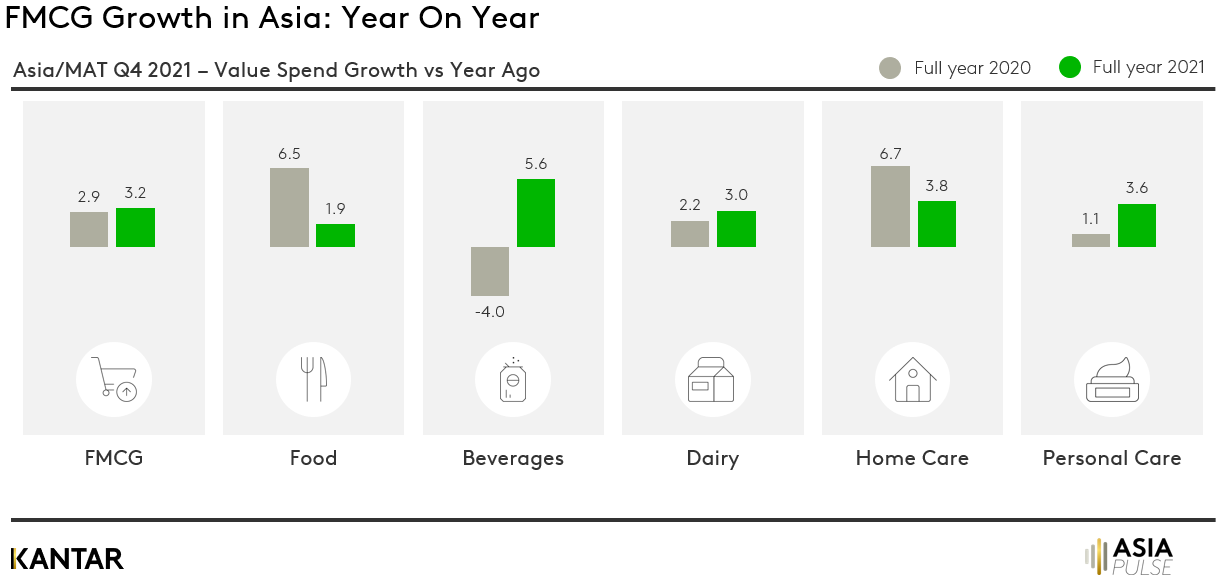FMCG in Asia maintained positive growth of 2.3% in Q1 2022. This slowdown from the same period year-on-year (4.1%, 2021) is greater in Dairy, Food, and Personal Care categories.
In macro-economic terms, the recent rise in inflation and cost-of-living crisis is evident across global markets, impacting various consumer behaviour metrics, such as spend per trip and basket size.

Key highlights of each market this quarter:
- Chinese Mainland: Q1 2022 saw robust FMCG growth but slowed down in March due to a surge in COVID-19 Omicron cases and lockdown restrictions.
- Taiwan: Although the macro-economic momentum slowed down, FMCG maintained a growth rate of 6.3%, and remained driven mainly by the Food sector.
- South Korea: Ecommerce showed sustained growth. Due to an upsurge in confirmed Omicron cases, more consumers were able to use online shopping services.
- India (Urban): As inflation soars, consumption trends are having an adverse impact on consumer shopping habits. FMCG volumes remained stable compared to last year while value grew marginally by 4%.
- Indonesia: Despite consumer confidence picking up, the trend in rising inflation started to impact the supply chain crisis, along with typically higher demand usually seen during the festive season, which can pause spending.
- Malaysia: In-home consumption begun to normalize in Q1 2022 after experiencing double digit growth in 2020 before later stabilizing in 2021. This led to fewer and smaller shopping trips.
- Saudi Arabia: Consistent price increase of more than 6% per quarter over the last three quarters or more, contributed to putting more pressure on the shoppers’ wallet.
- Thailand: With less disposable income, rising inflation and less demand for in-home consumption, basket sizes stopped growing and consumers became more careful about their spending.
- The Philippines: With favourable conditions, shoppers spent more this quarter vs last year as expected. Consumers spent more on Food, Beverage and Household Care.
- Vietnam: Consumers’ demand for in-home FMCG remained low due to a reduction of volume consumption. Market growth is mainly driven by an increase in average paid prices.
- United Arab Emirates: Shoppers consciously managed their spending by reducing volume and spend in most categories. Spending in essential categories were also reduced.
Download the report though the link below and contact our experts for more information.

